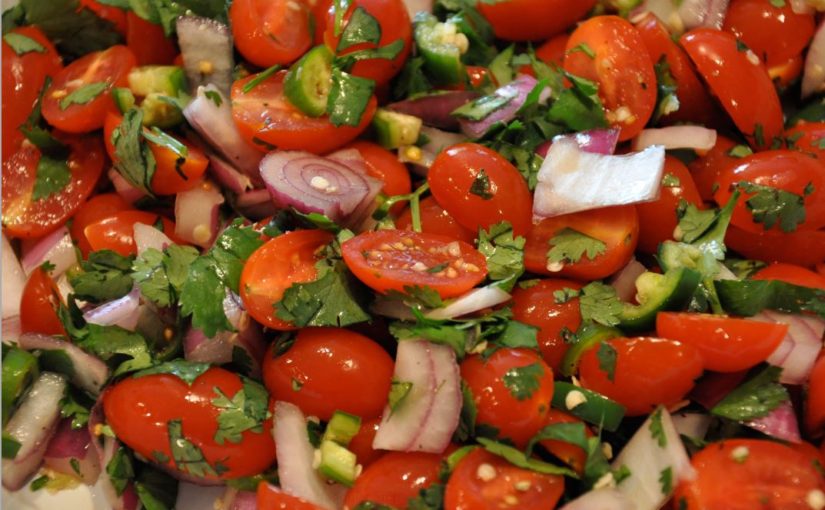Did you know that the tomato is a fruit? It actually is, you know. It certainly does not taste like one today. Though, it really used to. Tomatoes used to be sweet and delicious.
That is, until the 1920’s in the United States. What in the world was going on then? All that damned “Progressivism” and trying to change America into a utopia ruled by a benevolent wealthy class. Nonsense. Oh, yes. They implemented the Federal income tax, and they banned alcohol and did all kinds of things (like giving the right to vote to woman) to turn the world into “Heaven on Earth”. Yup. That’s why they dragged us into a war in Europe (one that our founders promised and vowed that we would never ever get tangled up into again…).
Oh, but I digress… after all, they meant well.
In part of the rush to make America a utopia, numerous programs were set in motion. One of which was reengineering the tomato. The bland, sterile, and cardboard-tasting tomato is the result of what happens when well-meaning people tries to improve something. Progressive millennials please take note.
Let me tell you all the secret story of the destruction of the humble tomato…
The Early History
From what I can gather, the tomato originated in the Americas.
They probably came from a geographic area around Peru. (Some reports place it at the extreme Southern section of South America.) As such, wild tomatoes can still be found in the Andes Mountains. We do not know if the Incans cultivated the tomato. However, we know that by the time the conquistadors came to Central and South America, there was widespread cultivation of tomatoes. I can well imagine an Incan, wearing one of those funny black hats, smunching on a tomato next to his favorite lama in the misty fog swirled mountains.
It was Spanish conquistador Hernán Cortés who first fell in love with this plant. From records, we know that he was exposed to it after he looted the Aztec city of Tenochtitlan. I can also picture him. Dressed as Aguirre and wearing the armor of that time, eating a tomato in his gloved fist; the red tomato juices running down his arm. While his armed force stands nearby with their flags and crosses. When he returned back to Europe he managed to carry some seeds back with him, along with coco, tobacco, gold, slaves…

The seeds grew rapidly in the warm Mediterranean climate. For various reasons, the Spanish government started encouraging its production. As such, production began in both Europe and the various Spanish colonies. We know that during the 1540s the tomato started being produced in Spanish fields. Therefore, it can be assumed that it was begin grown as a food.
A Dangerous Poison
While the Spanish had an obvious love for this wondrous fruit, the other European nations did not.
All throughout Europe and England, it was considered a dangerous poison. It was viewed as an unhealthy plant of which the red tomato fruit was a lethal poison. Thus, instead of treating it as a fruit, they used it as a tabletop decoration. This continued through the 17th and 18th centuries. As a decorative fruit, they cherished their appearance and beauty. To get the best-looking tomatoes, they experimented with selective breeding. As a result, there was an explosion of tomatoes of many colors and shapes.
Why did everyone in Europe consider this a dangerous poison?
There are two primary reasons. One of which is the appearance. There is a striking resemblance of tomatoes to the deadly nightshade plant. This is not something that can be taken lightly. Nightshade is extremely lethal. Back then, they did not have the same kinds of medical care that we have today. If you digested deadly nightshade, you would die.
Secondly, most Europeans thought that the tomato was poisonous because many of the wealthy people who ate it got very sick afterwards. This had nothing to do with the plant. However, it had everything to do with the plate that the tomato was ate off of.
It all had to do with the way plates and flatware was made in the 1500’s. Rich people in that time used flatware made of pewter. Pewter is a metal that has high-lead content. What happens is that foods that are high in acid, like tomatoes, would cause the lead to leech out of the plates. So if a tomato was on the pewter plate, the lead would leach into the tomato. This of course would result in lead poisoning and death. Because poor people, who ate off of plates made of wood, did not have that problem it was obvious what the problem was; the tomato. Today we know the truth; it was a tomato on a pewter plate.
This is the primary reason why tomatoes were only eaten by poor people until the 1800’s, especially poor Italians.
Changes during the 1800s
Apparently, Jefferson grew tomatoes on his large farm. As such, all of his daughters and granddaughters used them in numerous recipes. They did what many of us do today, they pickled them for storage. Jefferson’s son-in-law, Thomas Mann Randolph, mentioned that though tomatoes were hardly known ten years prior, by 1824 everyone was growing and eating them. So, maybe Jefferson was an outlier, or maybe he was a trendsetter. We don’t know for sure. All that we knew is that he liked tomatoes. Hey! Anyone who likes tomatoes can’t be all-bad.
The popularity of tomatoes increased during the 1800’s. We don’t know why. I personally think that the American Civil War had something to do with it. When the carpetbaggers headed South to take advantage of the devastation caused by the war, they brought tomatoes and tomato seeds with them. Soon, the entire South was a bloom with tomato plants. The world was made right again!
Thank God for tomatoes!
Around the same time as the Civil War Reconstruction period, there was an interesting period of immigration from Italy. It is true. During the 1800’s there was a mass immigration from Europe to America. Europe includes Italy, which is where the idea for pizza comes from. Indeed, how can we not talk about pizza when we are discussing tomatoes. For what is pizza without a tomato? Why it is nothing more than just bread and cheese. Indeed, there is no pizza without tomato sauce, and pizza was invented around Naples, Italy in the late 1880’s.
(According to history, the story is that pizza was created by a forgotten chef in Naples. For one reason, he must have thought that it was a good one, he wanted to celebrate the visit of Queen Margarite. This queen was the first Italian monarch since the French conquered Italy. The chef made the pizza from three ingredients that represented the colors of the brand new Italian flag. These colors were red, white, and green. The red is the tomato sauce, the white was the mozzarella cheese, and the green was the basil topping. And that my dear boys and girls, is how Pizza Margarite was born.)
As popular tomatoes were, they were difficult to grow and harvest. They were mostly grown at home for personal and private use.
“There was not in the United States at the time an acre of tomatoes from which a bushel of uniformly smooth tomatoes could be gathered,” - Alexander W. Livingston.
Oh, we know about Thomas Edison, and Nikola Tesla. Both of whom brought electricity to America and the world. But, what of the other great scientists and inventors and their contribution to society? Are not the others important? You betcha they are!
The so-called “modern age” of commercially grown tomatoes started as the brainchild of Alexander W. Livingston. He was an American botanist and scientist who dedicated much of his life on “improving” the tomato for commercial use. In his labs he managed to cross breed different types of tomatoes. He used the selective breeding of various types for his own nefarious ends. For he wanted to make the tomato an easily farmed plant. As such he was quite successful. It was he who developed the first commercial viable tomatoes. His 1870s breed called “Paragon” became an instant success. With this, followed a large tomato industry that eventually made the tomato one of the most popular fruits in America.
Joseph Campbell of Campbell’s soup came out with condensed tomato soup in 1897. With pizza and tomato soup firmly in place on Americans dinner table, the humble tomato became a solid fixture of the American diet. Everyone was eating tomatoes.
By the time the turn of the century came about (the year 1900), tomatoes were as American as Shoe shine boys, Blackface, playing the piano in the home living room, courting young women in the family parlor (or on the front porch while they sang to them), and a highway speed limit that was established at eight miles an hour.
Ah, you can’t have progress without limits, don’t you know?
Enter the Progressive Utopists
Starting in the 1870s, tomato breeders have been using traditional, non-GMO breeding techniques to develop the best tomatoes. They wanted tomatoes that would look ripe (nice and red), without any green portions, blotches or soft spots on the skin. They also wanted a thick skin that would not break during picking and transport. At that time, most tomatoes were grown on small farms or at home. Tomatoes needed to be harvested often, and carefully. They fell off the vine rather easily when ripe and tended to break easily because they had a thin skin. This needed to change.
Around 1920 or so, numerous teams (often located in universities or colleges) began to implement programs to “improve” the tomato. Of course, their idea of improvement was not to make it taste better. Rather, instead to make it easier to grow, ship and sell. As such, the implementation of strong reengineering programs for the tomato began in earnest. As the tomato “improved”, so did the ability to harvest it commercially.
Initially, large-scale production of tomatoes was mostly limited to the East coast of the United States. This continued, and production spread into California after World War 2. The seasonal workers in California were able to pick the tomatoes, but it would not last for long. By the early 1960’s, there was a shortage of skilled tomato pickers. As a result there became a need to utilize mechanical pickers. These machines could pick the tomatoes off the vine quicker but they had some problems. Most notably, they couldn’t select between green and ripe tomatoes, and they also tended to damage the tomatoes.
In those days, the machines would rip and tear the tomatoes. It would crush them. It would bruse the skin. The machines would get clogged up with the juices of damaged tomatoes, and time needed to be devoted to repairing the machinery.
Selective breeding all through the 1960’s was devoted to making the tomato easy to harvest and to ship.
Tomatoes became beautiful. They became a uniform red. No green skin or splotches anywhere. They became round, instead of plump. They became firm instead of juicy. They became thick skinned instead of thin skinned. They became perfect for harvesting and shipping.
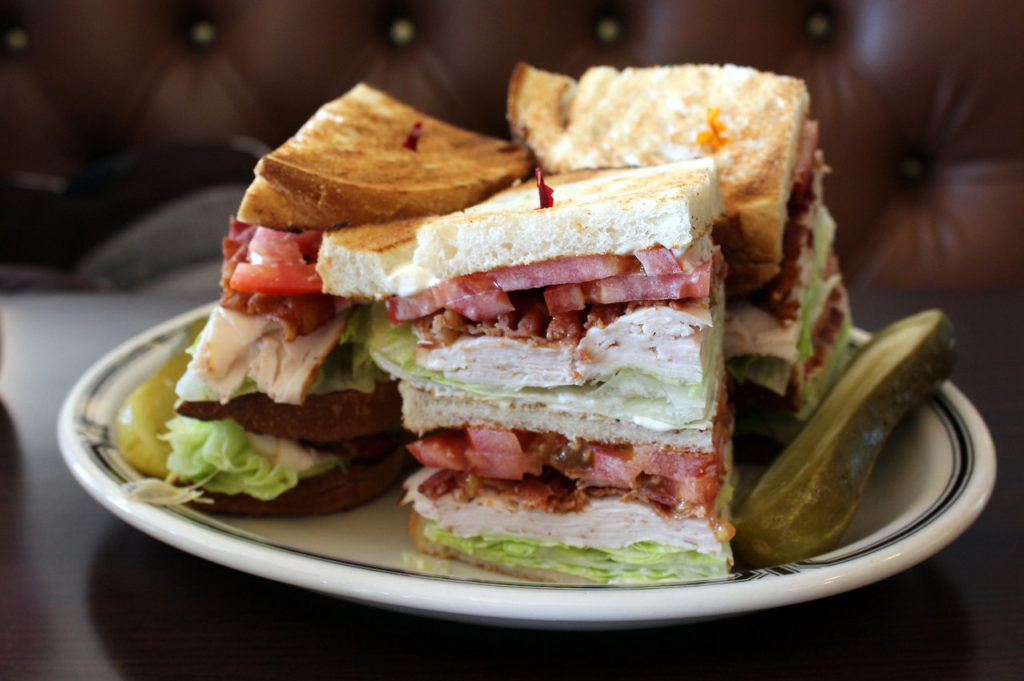
However, all this came at a cost. They became tasteless, boring, bland and tough. They lost much of their sweetness. They lost their aromatic smell, and they lost their taste.
This was not lost on the producers who used tomatoes in sauces, stews, and soups. To compensate for the degradation of the taste in tomatoes, the industry started to add sugars and corn syrup. Thus, by the end of the 1970’s tomatoes and tomato products were almost completely reengineered to be mass-produced and shipped in mass. All that remained were a few spots where “radical” holdouts treasured their own unique tomato plants. These were called “heirloom tomatoes”.
As a result the tomato today is a bland, red orb. It is no longer the juicy delicious tasteful plant that it once was.
How Tomatoes became Bland
Luckily for us, other people have noticed that tomatoes have started to taste terrible. For me, of course, I have stopped buying them in the grocery store. When I buy tomatoes, I go for the smaller tomatoes, and whatever local “heirloom” tomatoes that might be available. Other than that, I grow them next to the bamboo in my yard. Together, we have formed a silent group of tomato affectionados that demand tomatoes that have flavor.
Through study and evaluation, we have discovered why tomatoes taste so bland.
There are numerous reasons. Firstly [1], tomatoes were bred to be easy to ship. Secondly [2], tomatoes were bred to ripen evenly. Thirdly [3] they are not permitted to ripen on the vine. Finally, fourthly [4] they are bred to be plump and full of water, not full of tasty volatiles.
Easy to Ship
It turns out the problem with tomatoes today is that the genes that give tomato taste has been bred out of the plants. Over the years, the tomatoes have been bred to behave more like a shipping box, or a cardboard box. Of course this was done for shipping concerns. In the past, tomatoes had a hard time surviving the road to the market. They needed to be bred to act like a shipping box, or cardboard box. Which pretty much explains why they taste that way as well. Duh!

Researchers into this problem have discovered a “genetic switch” within the tomato. This switch is responsible for much of the sugar production within the tomato. In the breeding efforts to make the tomato easy to transport to the grocery store, the growers have turned off that switch. All the efforts to bred the tomato for hardiness destroyed the ability for the tomato to taste good. It bred out the sugar. This can make chewing on the tomato like eating a piece of rubber. The mutation to make the tomato act like a shipping box inadvertently turned off the sugar production switch, making the tomato bland.
Researchers discovered that a protein called GLK helps to create the sugar within the tomato. It also regulates photosynthesis in the plants, which also contribute to the production of sugar. This protein can be found near the stem and also tends to delay the reddening of the tomato skin. So all those nice red tomatoes in the supermarket contain either less or no GLK proteins, meaning the tomatoes taste bland. Yes. So if you see a nice evenly red tomato, smell it. If it has no smell, it will also have no taste.
Now comes the frightening part.
It’s not just in the United States. It’s all over the world! Indeed, researchers tested over 25 commercial tomato varieties from all over the world. Every single one of them contained the genetic switch mutation. None of them had any decent quantities of the GLK protein.
"The mutation they describe in their paper is in literally 100 percent of modern breeds sold in grocery stores today," -Harry Klee, a molecular geneticist at the University of Florida, Gainesville
Even Ripening
Just like the genetic switch to make tomatoes easy to ship, a genetic switch was found to make them ripe evenly.
As stated previously, commercial tomatoes are selected for uniform ripening. It was discovered early on that shoppers would select the ripest and reddest tomatoes in the grocery store. People bought red tomatoes. They shied away from green tomatoes, and tomatoes with imperfections. People came to associate red tomatoes with ripeness and large quantities of sugar. This is what happened, even though that is not what was actually happening.
Today, unripe (commercial) tomatoes are a light green color that turns into a uniform red when ripe. This is how it is with the breeds today. However, this was not always that way.
Heirloom tomatoes grew differently. When they ripen they do not do so evenly. They often have a dark green coloration near the stem even when the fruit is fully ripe. This is the secret to flavor. This top area of the tomato is known as the shoulders. It is what makes the tomatoes tasty.

The big problem, and the reason why it was genetically bred out, is that green shoulders make it harder to tell when the fruit is ripe and ready to pick.
Shoppers and grocery stores were often unhappy with green shoulders. That is, until 1937. In 1937 a “miracle tomato” appeared. This tomato, called “All-red” had the curious ability to ripe evenly. It was bred at the North Dakota State University Agricultural Experimental Station. The “All-red” tomatoes ripened to a bright uniform red with no green shoulders. This trait was called the ‘uniform ripening’ trait. It revolutionized the world of tomatoes and was immediately incorporated into all of the commercial tomatoes worldwide.
Yah. But like any horror movie, there are tradeoffs that you need to confront.
The so-called ‘uniform ripening’ trait avoided green shoulders by turning off a very important and key tomato gene. This gene, known as SIGLK2, increases chloroplast production in the tomato plant. Chloroplasts make energy through photosynthesis. They also turn tomato fruit a darker green. They ripen more evenly, which makes them more visually pleasing to consumers, and it’s easier to tell when they’re mature. This trait is governed by a cluster of genes called the “uniform ripening locus” or simply “u”. But…
But…
These chloroplasts to tend to make the important stuff. They manufacture sweet sugars and yummy carotenoids. In fact, the non-commercial tomatoes; the heirloom tomatoes receive 25% of their sugars from the chloroplasts in the fruits and 75% from leaves. So surprise, surprise! Those green shoulders on tomatoes are actually a good thing. They are a visual indicator that the tomato has more carbohydrates and more flavors. By breeding out the green, growers were breeding out the flavor.
Ignore the Vine
Today’s commercial tomatoes ignore the vine. The tomatoes are not permitted to ripen on the vine, which as everyone knows, is the best way to enhance flavor in fruits and vegetables.
Instead, they are picked green and stored in the dark. In order to give them that nice uniform red color, the unripened green tomatoes are gassed with ethylene. This is a nice trick that modern farmers use. It is a way of painting the tomatoes a red color without using red paint. The ethylene gas reacts with the tomato skin. When gassed, the tomatoes develop a red coloration. Which is, of course, the appearance of ripening.
Store bought tomatoes are not ripe. They just look like it. Real tasty tomatoes are vine ripened. Vine ripened tomatoes develop more sugars and thus more flavor.
Finally, all (if not most) commercial tomatoes are usually refrigerated. Refrigeration damages both fruit flavor as well as texture.
Full of Water instead of Volatiles
Aside from the tasty sugars, modern tomatoes were bread to be full of water. The volatiles were bred out of them. The key to a good tasting tomato is the volatile compound. This is a chemical that easily becomes a gas and therefore can be smelled. It is the volatiles, which are sorely lacking in most mass-bred tomatoes. They are a primary source by which a tomato acquires its sweet taste.
Now, the stores that sell the tomatoes, and the farmers that grow the tomatoes do not care at all about the taste. They want the biggest and heaviest tomatoes possible. That is because the heavier the tomato, the more money that they can sell it for.
Once a truck is loaded with tomatoes at the farm, the buyer of the tomatoes weighs the truck with and without the tomatoes. The difference is the weight of the tomatoes. The heavier the tomato, the more money the farmer makes.
This is a case of bigger is better. So the breeders turned on a combination of genetic switches that turned off volatiles, and bred the tomatoes to be water containers.
Volatiles were bred out of most store-bought tomatoes. Instead of volatiles, water has become the dominant component. What this means is that not only do mass-produced tomatoes don’t taste very good, but they don’t have as much nutritional value either.
There are six major volatile compounds that add the important flavor to a tomato. This was identified by Harry Klee, a biologist at the University of Florida. In research, he and his colleagues identified six volatile compounds that work together to impart better taste in a tomato. What is most interesting is that they do not particularly create sugars. Instead, these compounds add a sweet taste to the tomato without adding sugar.
Klee, experimented with 100 tomato varieties with 13 panels of 100 people. Each one rated each tomato according to taste and sweetness. The researchers used a technique known as gas chromatography to vaporize the tomato samples and sort out their molecules. This resulted in a list of chemicals and their concentrations within each sample. It was through this study that they found out that chemical compounds known as volatiles are very important. Volatiles are released as we chew and trigger a response in the olfactory system, contributing to overall taste sensation. By comparing the consumer panels’ tomato preferences to their chemical profiles, the team came up with a list of 13 chemical compounds strongly linked to likability.
Surprisingly, much of that taste came from the volatile compounds and not from sugar. Klee found that the volatiles, working through sensors in the nose, convinced the brain that a certain tomato was sweeter than another. Thus, when a tomato has both volatiles and natural sugars, the taste in a tomato really pops out.
Unfortunately, volatiles have been bred out of all the commercial tomato varieties.
Today
Today all of the commercial tomatoes no longer make sugars in the tomato meat. They get them from the leaves. They are unable to make their own sugar because the SIGLK2 has been disabled. They have no taste because they have no volatiles. They produce less carotenoids than heirloom tomatoes. This means that they have no interesting flavors (sweet or not sweet). Commercial tomatoes have less carbohydrates, less carotenoids, no volatiles, and less sugar.
But they do look better.
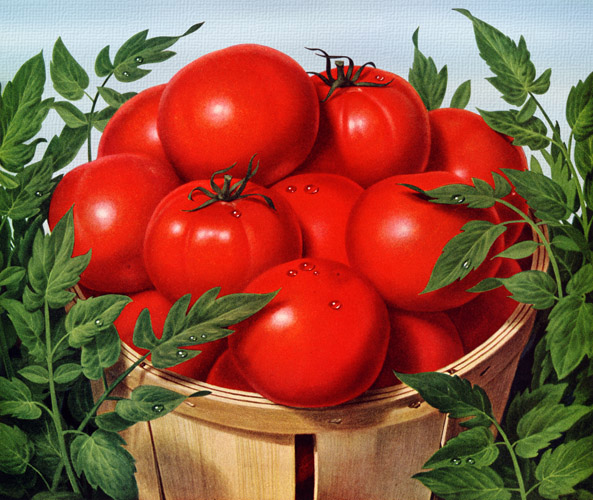
Enter the Busybodies
Much as I hate to say it, there are a number of busybodies that want to destroy the chances of you (the reader) ever getting to eat a “real” tomato. The EU, out of Brussels wants to ban it. Leaving everyone in the EU stuck with eating cardboard tasting commercial GMO “improved” tomatoes. They have come up with excuses to justify this decision, but as you should know by now, there are reasons and then there are true REASONS for doing anything.
In America, certain liberal progressives are out at it again. They too want to ban Heirloom tomatoes. According to Jane Black, commercial tomatoes taste just as good, if not better, than the heirloom tomatoes. Of course, I disagree. I think it is because I have a greater appreciation of food than those busybodies. But, you know, it’s only my opinion. Ah, but what else would you expect from WaPo? Eh?
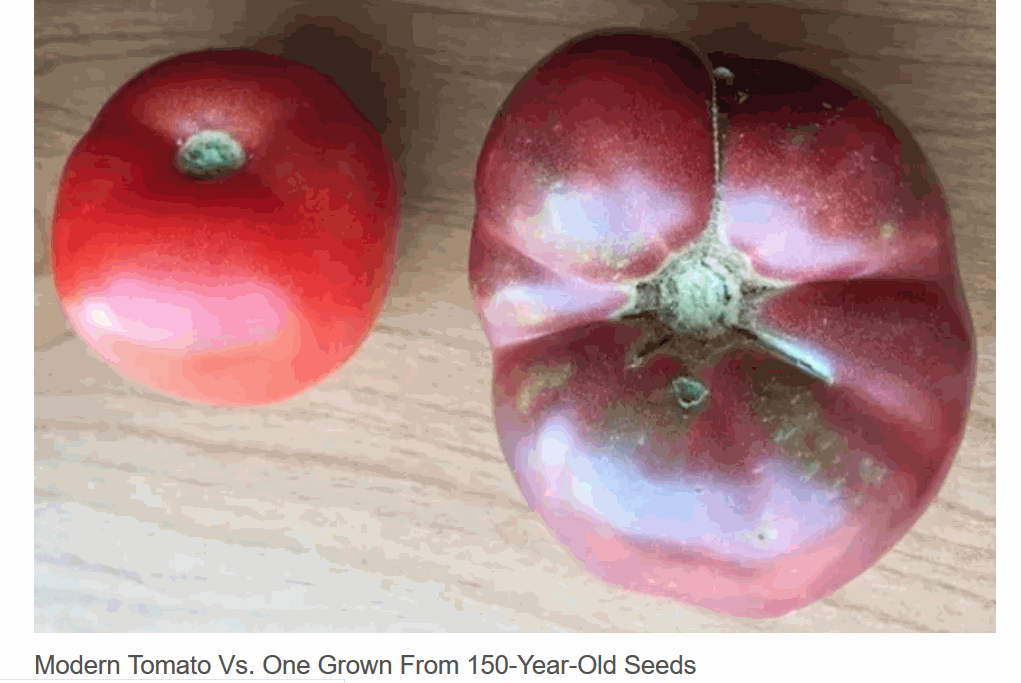
Ah, like all busybodies, they have their excuses. However, like all busybodies, they tend to keep their real reasons secret…
What Can We Do?
The first thing that I would suggest is to start ordering and planting heirloom tomatoes at home. In the summer, stop buying them at the grocery store. Every chance you get, complain to the grocer and the manager of the vegetable section how terrible the tomatoes taste and that you refuse to buy them. If enough people do this, perhaps we can one day reverse this deplorable situation.
I buy mine off taobao. The link will take you straight to the tomato seed section. Remember that one USD dollar is around 6.3 yuan. So take the cost and divide by six to figure out how much the seeds cost in dollars.
I am curious what others think about this. Perhaps you too have noticed that store-bought tomatoes taste like water filled baseballs. Maybe there are people who have grown their own tomatoes and have some hints on how much better they are. Maybe there are people out there in internet-land who, like me, also love the tomato sandwich. Come on. Don’t be shy.
I would also like to know about your tricks on planting seeds. We cannot buy tomato sprouts here in China, and I am just having a real dickens’ of a time trying to get them to grow. I’ve followed everything recommended here, and here, but they just sort of never make it past germination. Right now, today at the time of this writing, I have a plastic egg container filled with chicken poop with various Chinese heirloom seeds in it. I keep them moist and in the sun. It’s been ten days, and still no sprouts. Why?
—UPDATE—
It turns out that seeds in China are all coated with a plastic paint. This prevents the seeds for germinating in hot and humid weather. You need to scrub the paint off prior to planting the seeds. You let the seeds soak in warm water for around ten hours, and then you rub the paint off. Then once the paint is off, you can then plant them.
—END UPDATE—
It’s a tough world out there, and tomato lovers need to stick together against the onslaught of tomato haters, busybodies, and the armies of ignorant fools.
I believe, and I say, there are certain things that we need to fight for. These things are important to us, and we need to draw a line in the sand. I say that if we cannot have a tasty tomato, then what is the point of eating them! Gosh Darn It!
Links
Here are some links to buy some great heirloom tomato seeds;
- Heirloom tomato seeds for purchase. How to grow heirloom tomatoes. All varieties non-GMO.
- Baker Creek Heirloom Seeds offers 200+ varieties of rare heirloom tomato seeds.
- Burpee’s heirloom tomatoes are proven to have an aroma, flavor and freshness money can’t buy.
- TomatoFest is the ultimate resource for organic heirloom tomato seeds with over 600 organic heirloom tomato seed varieties along with growing information.
- A good selection of heirloom seeds.
- Annies Heirloom Seeds.
- Eden Brothers Heirloom Tomato seeds.
- Gary Isben’s Tomato Seeds.
- Tomato Growers Supply.
Conclusion
One of my all-time favorite things to do, in the summer, is to enjoy a tomato sandwich. This is a very simple affair. It is just a big slice of a big juicy “Big Boy” or “Better Boy” tomato between two slices of plain white sandwich bread and gobs of Miracle Whip salad dressing.
Unfortunately, tomatoes have been getting less tasty over time. Initially I didn’t notice it so much. But when you taste a “real” tomato and then experience a “commercial tomato” the difference is astounding. Look, I don’t just mean “Hey, that’s a pretty tasty tomato.”, I mean “WTF! WTF! Holey Heck! What is the Friggin’ heck going on with this tomato! “ It is that noticeable.
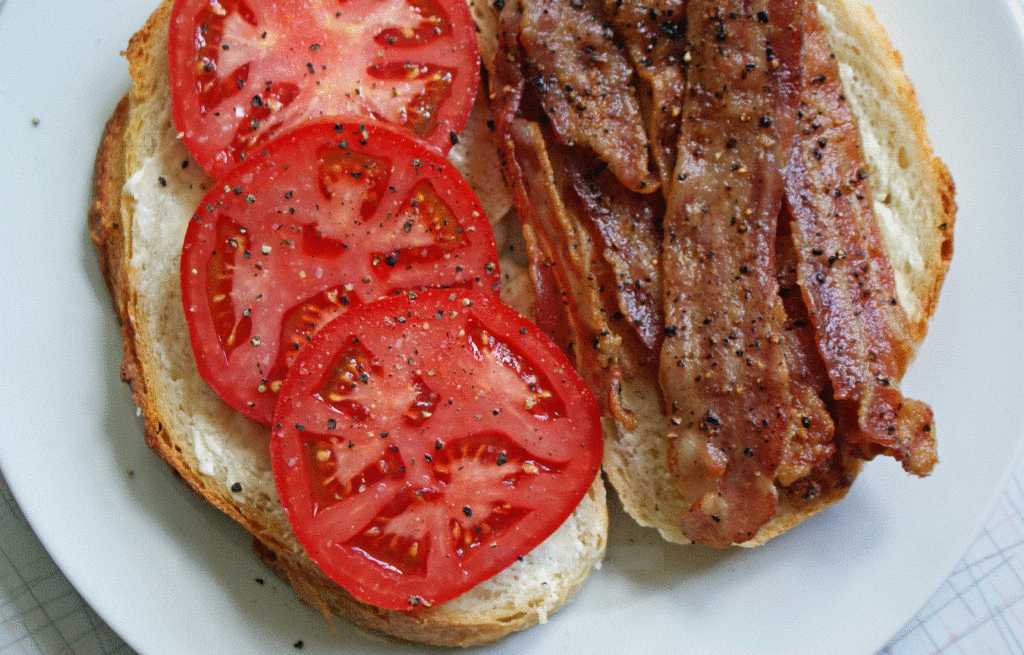
Those that have written about this phenomenon tend to down play the significance. They shouldn’t. It’s a serious issue.
While I might joke about the millennials who want a utopia where unicorns prance about on fields of clover in the bright sunny light, I too wish for a perfect life. However, my idea is a much simpler one. I dream for a nice fresh heirloom tomato sandwich on Miracle Whip slathered bread and an frosty cold bottle of a good golden beer. I can only pray that this becomes a commonplace reality.
There is Hope
From an article from Sci-News;
Tomatoes are one of the most eaten vegetables — although they actually are fruit botanically — with a worldwide annual production of 182 million tons, worth more than $60 billion.
U.S. tomato consumption per capita was 9.2 kg (20.3 pounds) for fresh tomatoes in 2017 plus an additional 33.2 kg (73.3 pounds) of processed tomatoes eaten per person. They are the second most consumed vegetable in the United States after potatoes.
While cultivated tomatoes have a wide range of physical and metabolic variation, there have been several severe bottlenecks during its domestication and breeding. This means today’s tomatoes have a narrow genetic base.
The tomato pan-genome helps identify what additional genes beyond the reference might be available for crop breeding and improvement. It includes all of the genes from 725 different cultivated and closely related wild tomatoes, which revealed 4,873 genes that were absent from the original reference genome.
“The pan-genome essentially provides a reservoir of additional genes not present in the reference genome. Breeders can explore the pan-genome for genes of interest, and potentially select for them as they do further breeding to improve their tomatoes,” said co-lead author Dr. Zhangjun Fei, a researcher with Boyce Thompson Institute for Plant Research and the U.S. Department of Agriculture-Agricultural Research Service.
“One of the most important discoveries from constructing this pan-genome is a rare form of a gene labeled TomLoxC, which mostly differs in the version of its DNA gene promoter,” added co-lead author Dr. James Giovannoni, a molecular biologist with Boyce Thompson Institute for Plant Research and the U.S. Department of Agriculture-Agricultural Research Service.
“The gene influences fruit flavor by catalyzing the biosynthesis of a number of lipid-involved volatiles — compounds that evaporate easily and contribute to aroma.”
In addition, the researchers found a new role of TomLoxC — it facilitates production of a group of apocarotenoids that work as signaling molecules influencing a variety of responses in plants including environmental stresses. The compounds also have a variety of floral and fruity odors that are important in tomato taste.
The rare version of TomLoxC was found in only 2% of older or heirloom cultivated large tomato varieties, although the version was present in 91% of currant-sized wild tomatoes, primarily Solanum pimpinellifolium, the wild predecessor of the cultivated tomato. It is becoming more common in newer varieties.
“It appears that there may have been strong selection pressure against or at least no selection for the presence of this version of TomLoxC early in the domestication of tomatoes,” Dr. Giovannoni said.
“The increase in prevalence of this form in modern tomatoes likely reflects breeders’ renewed interest in improved flavor.”
The results are published in the journal Nature Genetics.
_____
Lei Gao et al. The tomato pan-genome uncovers new genes and a rare allele regulating fruit flavor. Nature Genetics, published online May 13, 2019; doi: 10.1038/s41588-019-0410-2
Take Aways
- Tomatoes are a fruit.
- Tomatoes taste like a vegetable because the sweet taste was bred out of them.
- The reason that tomatoes taste this way is due to greed.
- Mast people, and science agrees, that heirloom tomatoes are tastier than commercial tomatoes.
- Liberal progressives in the EU and America want to ban tasty tomatoes.
- I like fresh tomato sandwiches and icy cold beer.
RFH
How about a Request For Help? I tire of busybodies and statists who poke fun at the ideas and theories of others. They offer no constructive dialog. Rather they just make fun, ridicule, and then scurry under a rock.
I use this forum as a way to disseminate some of the things that I learned though my years of life. I like to talk about things as I have experienced them, and I am always willing to listen to what others have to say. (Though when it comes to tomatoes, I do have some very strong opinions.)
So, if you, the reader, were so interested, I would welcome your stories. Tell me how you came to love tomatoes, and how to grow them. Tell us your secrets on getting the sprouts started, because that is one thing that I am having a very difficult time doing. Tell us all how you use them, and why you think that it is just “OK” to ship and sell cardboard tasting tomatoes in stores. Share with us your theories as to why the EU is trying to ban any seeds that are not being used by the top food-producing mega-corportations. Share with us, because we want to know.
This is my callout, to you the reader, to assist all of us in solving these mysteries. After all, this is a far better use of the internet than for looking at Justin Bieber videos.
FAQ
Q: What is a “heirloom tomato”?
A: A heirloom tomato is a tomato variety that was NOT bred for mass consumer sales and distribution. As such, it was bred for taste, appearance, and smell. Because heirloom tomatoes are difficult to pick and ship for the mass market, they are seldom found in grocery stores. They can (for the most part) be obtained by growing them yourself by planting seeds.
Q: What is the history of the tomato?
A: Tomatoes originated in South America near Peru. They have been bred over the years as a consumer product. As such, they are now treated as a vegetable instead of as a fruit. This is because the sweetness and volatiles have been bred out of them. They are used in the most important food dishes in America; the pizza and hamburger.
Q: What is a tomato festival?
A: A tomato festival is a place where people display and sell their own (often non-commercial) tomatoes. These are various home-developed heirloom tomatoes. It is an excellent place to sample different types of tomatoes, chat with other tomato lovers, and buy and trade tomato seeds.
Q: Why do you like beer?
A: Icy cold beer tastes great after a long hard day of work and labor. It relaxes you. It lets your tension go away, and it tastes really, really good with fresh heirloom tomatoes. (Oh, so does wine, but you drink it differently. Hillary Clinton is a big Chardonnay fan. I can’t fault that, she does have good taste in wines. Though I am a dry red wine fan, myself.)
Q: Can I drink wine with a tomato sandwich?
A: Let me say this clearly. Tomatoes taste good anytime, anywhere, and prepared in any way. Wine goes great with just about everything. Hillary Clinton is a big Chardonnay fan. I can’t fault that, she does have good taste in wines. Though I am a dry red wine fan, myself.
Q: How do the Chinese eat tomatoes?
A: The Chinese people love tomatoes just like Americans do. They use the tomatoes for all sorts of dishes, but the most important one is the “tomato with egg” dish. This is an AMAZING dish that every single American who has visited China has fallen in love with. It is not what you think; just scramble eggs with tomatoes. No. You prepare the tomatoes with some special spices and then mix in eggs. It is glorious!
Q: What is the best use for a tomato?
A: I think that the best use for a tomato is to eat it. I really don’t think that it can compete against the rose as a decoration. When eating it, I would suggest that it be picked off the vine fresh. I do prefer vine ripened tomatoes. A good tomato tastes great just as is. I often add a pinch of salt and pepper for flavor, but that is just me. If you need to add sugar, then you know that the tomatoes you are eating are a commercial variety.
FR Posting
This article was posted on free Republic on 5AUG18. You can read the comments HERE.
Posts Regarding Life and Contentment
Here are some other similar posts on this venue. If you enjoyed this post, you might like these posts as well. These posts tend to discuss growing up in America. Often, I like to compare my life in America with the society within communist China. As there are some really stark differences between the two.



























Posts about the Changes in America
America is going through a period of change. Change is good… that is, after it occurs. Often however, there are large periods of discomfort as the period of adjustment takes place. Here are some posts that discuss this issue.














More Posts about Life
I have broken apart some other posts. They can best be classified about ones actions as they contribute to happiness and life. They are a little different, in subtle ways.

























Stories that Inspired Me
Here are reprints in full text of stories that inspired me, but that are nearly impossible to find in China. I place them here as sort of a personal library that I can use for inspiration. The reader is welcome to come and enjoy a read or two as well.



















Articles & Links
You’ll not find any big banners or popups here talking about cookies and privacy notices. There are no ads on this site (aside from the hosting ads – a necessary evil). Functionally and fundamentally, I just don’t make money off of this blog. It is NOT monetized. Finally, I don’t track you because I just don’t care to.
- You can start reading the articles by going HERE.
- You can visit the Index Page HERE to explore by article subject.
- You can also ask the author some questions. You can go HERE to find out how to go about this.
- You can find out more about the author HERE.
- If you have concerns or complaints, you can go HERE.
- If you want to make a donation, you can go HERE.

